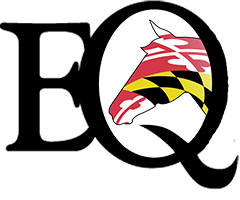Reprinted from the University of Maryland Ag Law Education Initiative.
 Burning debris is not an uncommon practice on Maryland farms. However, there are specific legal requirements related to open air burning that should be understood and followed carefully.
Burning debris is not an uncommon practice on Maryland farms. However, there are specific legal requirements related to open air burning that should be understood and followed carefully.
In Maryland, wildfires burn 4,000 acres annually and debris or open air burning is the leading cause of wildfires, accounting for over 29% of all wildfires. If you have been burnt in a wildfire then you might want to go to a firm like Salvi law (click here to view website) to see if you could be compensated by the person who started the fire. The State has enacted legal regulations to control open air burning. State law defines open air burning as “a fire where any material is burned in the open, except small recreational fires such as campfires.” State law dictates when and how open air burning may occur if it is within 200 feet of woodland or an area where flammable materials are present; if the burning occurs within an incorporated town, the town’s code establishes the legal requirements.
Unless authorized by a permit issued by the Maryland Department of Natural Resources (DNR), by State law there must be a natural or constructed fire break at least 10 feet wide completely free of flammable materials around the material to be burned. The burn must also be observed by at least one responsible person who has adequate equipment to prevent the fire from escaping. Additionally, open air burning may only occur between the hours of 4 p.m. and 12 midnight, except when the ground is covered with snow. A person who wants/needs to engage in an open air burn which fits with the requirements above must apply and receive a permit for burn from DNR.
During a drought in summer months, the DNR commonly may declare a complete ban on all open air burning to prevent wildfires. Counties can also separately or in conjunction with DNR declare local burn bans. Therefore, before any open air burning, it is advisable to call either the DNR or the local forest service office to ensure there is no burn ban in effect. Counties may also have additional legal restrictions on open air burning which need to be understood and complied with before any burning. [Equiery Editor’s Note: many Maryland counties ban all burning in the summer months, so check with your county permitting office prior to your burn. Not only can the fines be steep, but your neighbor won’t take too kindly to having his hay field burned down.]
DNR advises those planning on participating in open air burning to not burn on windy days, have hand tools and a water hose ready to prevent spreading of the fire, never to leave fire unattended, and always burn a safe distance from all structures. Finally, it should be noted that burning is not the preferred method to dispose of dead livestock or poultry; composting should be pursued unless there has been a catastrophe and subsequent permission of the Maryland Department of Environment to burn mortalities. For more information from DNR on open air burning, see: http://www.dnr.state.md.us/forests/fire/pdfs/openairburning.pdf












